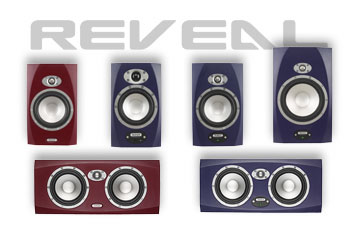The new Tannoy Reveal range of near field monitoring speakers builds upon the success and recording industry reputation of the famous original Tannoy Reveal. When launched in the mid nineties, the Reveal was widely recognised as the product that defined the category, and has been the monitor of choice for thousands of amateur and professional recording facilities worldwide.

The original Reveal model was well renowned for its rigid cabinet and substantial baffle. With the new Reveal models, the cabinets have been further braced and refined to provide the most rigid platform possible for the new driver designs. Securely attached to the solid baffle, with no less than 10 hex socket countersunk-head screws, an all-new bass driver performs with significantly reduced distortion.
Magnetic circuit flux control rings and extensive Klippell™ based symmetry analysis has made this performance improvement possible and the new driver provides tight, punchy and controlled bass response with a clean and open mid range for superb vocal intelligibility. The open and detailed reproduction of mid-high frequencies is further enhanced with the inclusion of the Tannoy WideBand™ high frequency unit to improve and extend the high frequency phase response. This ensures increased tonal accuracy of individual instruments in the reproduction process – a mix critical factor allowing the best EQ and placement decisions to be made.
Significant advances in digital speaker measuring techniques such as Klippell™ symmetry and non linear distortion analysis, laser scanning interferometry, acoustic CAD simulation, and precision manufacturing processes have all resulted in a comprehensively improved range of Reveal monitors.
The new models provide greater bandwidth; significantly lower levels of distortion, smoother responses, more accurate phase control, higher sensitivity levels and greater input source flexibility. An option of two cabinet and driver configurations is offered so that a precise choice can be made to satisfy the user requirements for all listening environments and applications.
